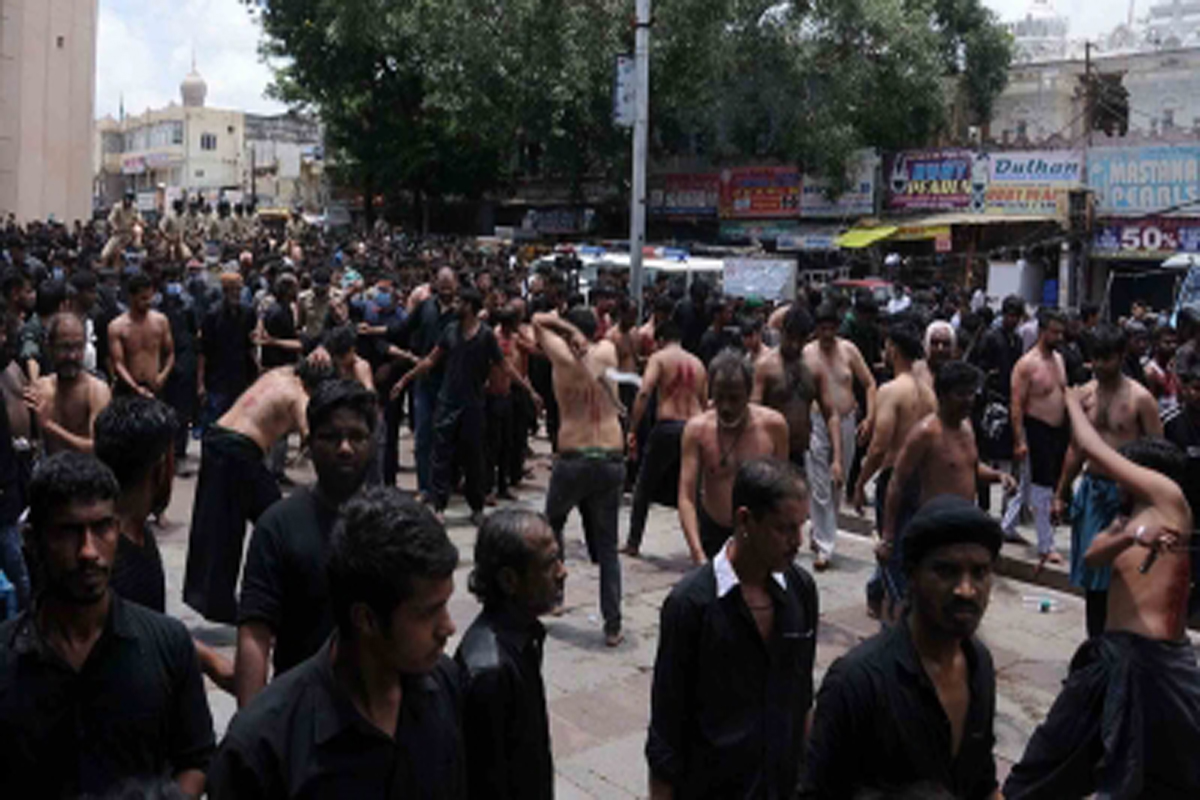Palestinian flags waved in MP during Muharram, 3 detained
The police took action after the Bajrang Dal and other Hindu outfits lodged a complaint regarding one such incident in the Khandwa district of the state.
As per these new guidelines, the state government stated that all prayers associated with Muharram shall be held at Masjids (mosques) strictly adhering to Covid rules.

Photo: IANS
Amidst fears of the onset of a third wave of Covid in the days to come and back-to-back festivals lined up in the auspicious month of ‘Shraavana’ (August-September), Karnataka on Thursday ordered a ban on large scale religious, cultural and entertainment congregation/processions of people besides giving free hand to all district authorities to decide on enforcing restrictions locally on the festive days.
In a fresh set of elaborate restriction guidelines for the celebration of festivals, Karnataka has banned all kinds of processions associated with both festivals (Muharram and Gowri-Ganesha festivals) as both of these festivals are observed by devotees of respective communities for at least 10 days in a row and both of these festivals attract large number devotees and processions by respective communities.
Advertisement
As per these new guidelines, the state government stated that all prayers associated with Muharram shall be held at Masjids (mosques) strictly adhering to Covid rules.
Advertisement
For Muslims, Muharram is considered to be the second holiest month after Ramzan, is the first month of the Islamic Year or the Hijri calendar.
The Muslim society’s two major sects Shias and Sunnis observe the tragedy of Hussain martyrdom in the battle of Karbala in a contrasting manner. Shia’s take out street processions self-flagellation at various locations, while Sunnis do so to a much lesser extent, storytelling, weeping and taking out processions but do not indulge in self-flagellation.
The state government has enforced similar stringent restrictions by banning the public celebration of the Ganesha Chaturthi (Hindu festival) by setting up pandals (makeshift pavilions).
“People must celebrate the festival in their homes and no procession will be allowed while bringing the Ganesha idol or during the immersion of the idols,” the order stated.
The 10-day Ganesha festival begins with the consecration ceremony (first day) and on the last day of the festival, which is popularly known as Ganesh Visarjan/Nimajjinam (immersion ceremony) takes place which is also is also popularly known as Anant Chaturdashi. On both occasions, devotees come in hordes to witness the installation of Lord Ganesha and during his immersion ceremony, devotees gather in large numbers. Lord Ganapati’s idol immersion takes place in a river, sea or water body.
Advertisement